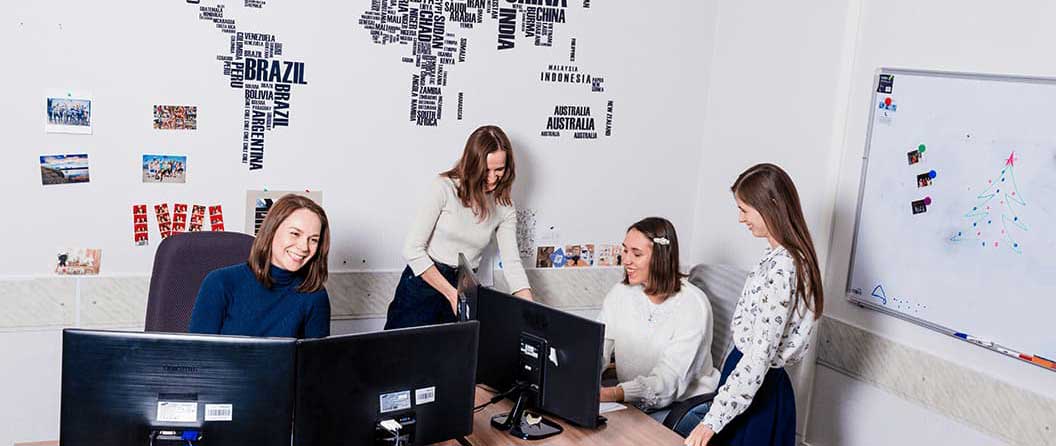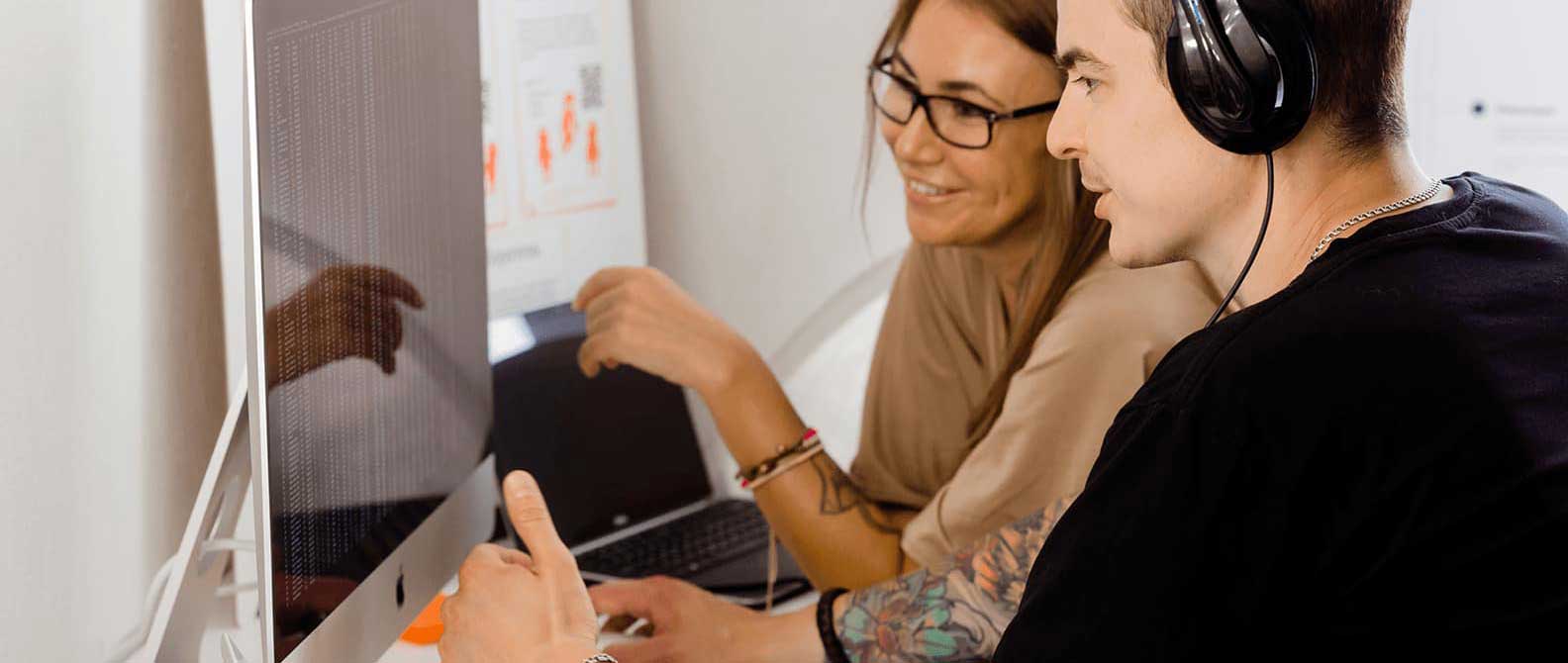
At this stage, our engineering team joins the project for a rough evaluation. It is handled with the help of automated tools allowing the exclusion of all identical content pieces (such as footers, headers, etc.) from the total count of words.This is crucial for a website localization costing as sometimes a website may consist of up to 80% repetitions. The engineering team also checks out all the illustrations and attachments on pages such as PDFs, presentations, videos, etc. that need to be localized.
At this stage, we set up a team of translators and editors that will be the most efficient in terms of anticipated results and budget. Our vendor pool is wide enough to provide any language for a reasonable price. Moreover, we have in-house SMEs and professional linguistic editors who work in thoroughly elaborated project workflows using state-of-the-art technology.When we talk about website localization it goes far beyond the borders of content translation. A website is a marketing tool that is tied closely to brand positioning. This means that a website shouldn't be seen as just a translated copy, but rather as an originally created web page for the particular target audience. In many cases when we talk about website localization the process of transcreation is involved.

To deliver excellent text consistency and therefore contribute to the overall quality, it is vital to pay attention to terminology. We generate glossaries for each project based on existing material or mine the appropriate resources to make a suitable industry glossary from scratch.
Although CATs are widely used in the industry, being pro experts in all the existing CAT instruments constitutes a huge advantage. We are fully aware of the capabilities of each tool on the market, so we select the most effective one according to project requirements.
It is crucial to manage all the versions of the translation to track all the updates. At Palex we introduced and mastered the SVN system for keeping the document updates in perfect order which prevents confusion of versions and eliminates the chance of a mistake.
After the translation is ready, it is checked in our QA department. At Palex Group we manage the process of quality assessment not only linguistically but most importantly from the standpoint of the professional field. Therefore, we involve subject-matter experts when necessary. Moreover, our QA team is truly blessed with an indispensable technological assistant created by Palex software engineers – Verifika. With Verifika there's no subtle chance of a mistake slipping into the text, especially when the appropriate glossaries are involved.

File export-import may become a serious problem in the absence of a designated engineer or a website developer. The inner website admin area may be quite tricky for the export-import implementation, especially in case of a custom-made website. While the mechanisms of a multilingual website creation may be very different, our localization engineers have seen dozens of them and are perfectly equipped to perform all the necessary work from the beginning to the end.

This is a vital part of the process during which our engineers and testers check how the translated website works. We test how the texts fit into layouts, symbol support, active links, the setup of dates and addresses, and many more features of the website design.

Modern business and marketing processes require software developers to use an agile workflow. This means that new content or new features are added on a weekly basis. Therefore the localization industry is also becoming more flexible in keeping up with business goals and introducing new approaches and workflows such as continuous localization. Our project managers have elaborated the optimal workflow for such ongoing projects. These projects include online shops, e-learning platforms, and other websites where a timely content update is a part of the business strategy.



